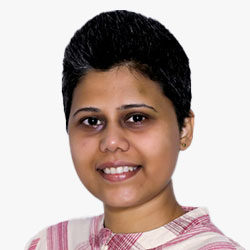
Meenal Dhande
Associate Editor - EMEA | Geospatial World | India
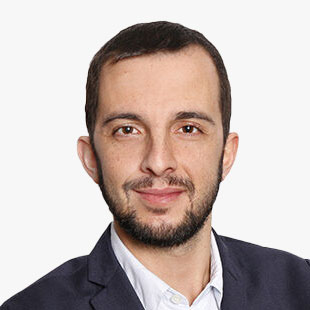

Sylvain is a Senior Consultant for Earth Observation at Euroconsult, based in Toulouse, France. Thanks to a detailed knowledge of Earth observation vertical segments, he supports the development of the firm's research reports as well as various activities related to consulting in Earth observation markets: proposal management, market opportunity analysis, business plan development, commercial strategy Prior to Euroconsult, he worked as a business developer at Telespazio in the Geoinformation Business Unit. He was in charge of bid management for many types of requests for proposals (ESA, CNES, European Commission, French Navy, private companies, etc.). He also contributed to the definition of the maritime VAS portfolio and performed global market analysis on agriculture to support the Business Unit's strategic decisions. In 2018 and 2019, he carried out a feasibility study that aimed to define an innovative operational concept of satellite constellation to produce a global and cost-effective Digital Elevation Model (DEM). This mission included a global market study over various vertical segments, cost-benefit analysis, and technical trade-offs in order to identify a disruptive positioning in a globalized industrial and value-added services Earth observation market, offering the best repercussions for the French space industry. Sylvain holds a Master's Degree in remote sensing applied to agriculture and environment from Montpellier SupAgro as well as an Advanced Master's Degree in Technology and Innovation Management from Toulouse Business School.
Abstract
Leveraging SAR:key drivers for market adoption
Over the past 5 years, disruptive constellation projects have emerged, which should transform the way SAR is being used and support a democratization of SAR based solutions. Two key historical barriers to break into the commercial market are being addressed: data cost and processing power. Euroconsult has identified more than ten SAR companies that have announced plans to develop constellations. A common thread is their focus on the X-band domain thus, paving the way for Very-High-Resolution applications at the expense of other capabilities such as a wider surface penetration capability. The main challenge is the same as for optical multispectral constellations - to build cost-effective systems that can provide high-revisit data which would allow for building comprehensive change detection analytics. Those companies are also promoting a diversity of models, from a focus on data sales, at least initially, to the supply of more integrated turnkey services. The development process strategy has so far been iterative for smallsat constellations, still looking for a higher resolution. Nevertheless, the resolution is not everything, and other factors, such as noise, polarization, or geolocation accuracy can also strongly influence the market positioning and technical parameters of SAR smallsat constellation. Moreover, some vertical markets can be more difficult to target considering the competition with incumbent players. Yet, the high revisit offered by constellations can be seen as a valued complement in some cases or can totally disrupt the market at a very competitive price point by opening new applications requiring almost permanency. Based on Euroconsult's expertise in Earth Observation market analysis and drawing on our annual high-level Summit on Earth Observation Business, Euroconsult is proposing a side 15-minute speaking slot to get a global overview of the SAR market.
Sylvain Drilholle
 Sylvain Drilholle
Senior Consultant , Euroconsult , France
Sylvain Drilholle
Senior Consultant , Euroconsult , France
Sylvain is a Senior Consultant for Earth Observation at Euroconsult, based in Toulouse, France. Thanks to a detailed knowledge of Earth observation vertical segments, he supports the development of the firm's research reports as well as various activities related to consulting in Earth observation markets: proposal management, market opportunity analysis, business plan development, commercial strategy Prior to Euroconsult, he worked as a business developer at Telespazio in the Geoinformation Business Unit. He was in charge of bid management for many types of requests for proposals (ESA, CNES, European Commission, French Navy, private companies, etc.). He also contributed to the definition of the maritime VAS portfolio and performed global market analysis on agriculture to support the Business Unit's strategic decisions. In 2018 and 2019, he carried out a feasibility study that aimed to define an innovative operational concept of satellite constellation to produce a global and cost-effective Digital Elevation Model (DEM). This mission included a global market study over various vertical segments, cost-benefit analysis, and technical trade-offs in order to identify a disruptive positioning in a globalized industrial and value-added services Earth observation market, offering the best repercussions for the French space industry. Sylvain holds a Master's Degree in remote sensing applied to agriculture and environment from Montpellier SupAgro as well as an Advanced Master's Degree in Technology and Innovation Management from Toulouse Business School.
Abstract
Leveraging SAR:key drivers for market adoption
Over the past 5 years, disruptive constellation projects have emerged, which should transform the way SAR is being used and support a democratization of SAR based solutions. Two key historical barriers to break into the commercial market are being addressed: data cost and processing power. Euroconsult has identified more than ten SAR companies that have announced plans to develop constellations. A common thread is their focus on the X-band domain thus, paving the way for Very-High-Resolution applications at the expense of other capabilities such as a wider surface penetration capability. The main challenge is the same as for optical multispectral constellations - to build cost-effective systems that can provide high-revisit data which would allow for building comprehensive change detection analytics. Those companies are also promoting a diversity of models, from a focus on data sales, at least initially, to the supply of more integrated turnkey services. The development process strategy has so far been iterative for smallsat constellations, still looking for a higher resolution. Nevertheless, the resolution is not everything, and other factors, such as noise, polarization, or geolocation accuracy can also strongly influence the market positioning and technical parameters of SAR smallsat constellation. Moreover, some vertical markets can be more difficult to target considering the competition with incumbent players. Yet, the high revisit offered by constellations can be seen as a valued complement in some cases or can totally disrupt the market at a very competitive price point by opening new applications requiring almost permanency. Based on Euroconsult's expertise in Earth Observation market analysis and drawing on our annual high-level Summit on Earth Observation Business, Euroconsult is proposing a side 15-minute speaking slot to get a global overview of the SAR market.

Sylvain is a Senior Consultant for Earth Observation at Euroconsult, based in Toulouse, France. Thanks to a detailed knowledge of Earth observation vertical segments, he supports the development of the firm's research reports as well as various activities related to consulting in Earth observation markets: proposal management, market opportunity analysis, business plan development, commercial strategy Prior to Euroconsult, he worked as a business developer at Telespazio in the Geoinformation Business Unit. He was in charge of bid management for many types of requests for proposals (ESA, CNES, European Commission, French Navy, private companies, etc.). He also contributed to the definition of the maritime VAS portfolio and performed global market analysis on agriculture to support the Business Unit's strategic decisions. In 2018 and 2019, he carried out a feasibility study that aimed to define an innovative operational concept of satellite constellation to produce a global and cost-effective Digital Elevation Model (DEM). This mission included a global market study over various vertical segments, cost-benefit analysis, and technical trade-offs in order to identify a disruptive positioning in a globalized industrial and value-added services Earth observation market, offering the best repercussions for the French space industry. Sylvain holds a Master's Degree in remote sensing applied to agriculture and environment from Montpellier SupAgro as well as an Advanced Master's Degree in Technology and Innovation Management from Toulouse Business School.
Abstract
Leveraging SAR:key drivers for market adoption
Over the past 5 years, disruptive constellation projects have emerged, which should transform the way SAR is being used and support a democratization of SAR based solutions. Two key historical barriers to break into the commercial market are being addressed: data cost and processing power. Euroconsult has identified more than ten SAR companies that have announced plans to develop constellations. A common thread is their focus on the X-band domain thus, paving the way for Very-High-Resolution applications at the expense of other capabilities such as a wider surface penetration capability. The main challenge is the same as for optical multispectral constellations - to build cost-effective systems that can provide high-revisit data which would allow for building comprehensive change detection analytics. Those companies are also promoting a diversity of models, from a focus on data sales, at least initially, to the supply of more integrated turnkey services. The development process strategy has so far been iterative for smallsat constellations, still looking for a higher resolution. Nevertheless, the resolution is not everything, and other factors, such as noise, polarization, or geolocation accuracy can also strongly influence the market positioning and technical parameters of SAR smallsat constellation. Moreover, some vertical markets can be more difficult to target considering the competition with incumbent players. Yet, the high revisit offered by constellations can be seen as a valued complement in some cases or can totally disrupt the market at a very competitive price point by opening new applications requiring almost permanency. Based on Euroconsult's expertise in Earth Observation market analysis and drawing on our annual high-level Summit on Earth Observation Business, Euroconsult is proposing a side 15-minute speaking slot to get a global overview of the SAR market.
Senior Consultant | Euroconsult | France


As Sr. Solutions Engineer at L3Harris Geospatial, Nicolai is a technical point of contact for direct offices and Channel distributor partners, across Europe, the Middle East, and Africa (EMEA). Graduated as Engineer in Cartography from the Dresden University of Technology (Germany), with since then more than 10 years of experience in remote sensing. Main interest is in latest advancements in SAR data analytics, Deep Learning applications, and process automation for L3Harris Geospatial products and vertical market offers.
Abstract
SAR Processing@Scale delivering Insights-as-a-Service
Since, unlike optical sensors, Synthetic Aperture Radar (SAR) can operate both day and night, and even through clouds, operational, pervasive monitoring and target recognition systems can be implemented to persistently observe an area, activity, event, or a phenomenon of interest. Examples include military and intelligence applications such as ship detection and fusion with AIS data for dark vessel detection, or monitoring structural conditions of critical infrastructures such as tailing dams with millimetric accuracy. However, deriving SAR based insights requires processing and analyzing large volumes of data that can be time consuming and prohibitive for those without resources or know-how. In this presentation we demonstrate L3Harris Insights-as-a-Service technology to efficiently and accurately analyze large volumes of SAR data at scale, for delivering critical insights and making informed decisions in a timely manner.
Nicolai Holzer
 Nicolai Holzer
Sr. Solutions Engineer EMEA , L3Harris , Germany
Nicolai Holzer
Sr. Solutions Engineer EMEA , L3Harris , Germany
As Sr. Solutions Engineer at L3Harris Geospatial, Nicolai is a technical point of contact for direct offices and Channel distributor partners, across Europe, the Middle East, and Africa (EMEA). Graduated as Engineer in Cartography from the Dresden University of Technology (Germany), with since then more than 10 years of experience in remote sensing. Main interest is in latest advancements in SAR data analytics, Deep Learning applications, and process automation for L3Harris Geospatial products and vertical market offers.
Abstract
SAR Processing@Scale delivering Insights-as-a-Service
Since, unlike optical sensors, Synthetic Aperture Radar (SAR) can operate both day and night, and even through clouds, operational, pervasive monitoring and target recognition systems can be implemented to persistently observe an area, activity, event, or a phenomenon of interest. Examples include military and intelligence applications such as ship detection and fusion with AIS data for dark vessel detection, or monitoring structural conditions of critical infrastructures such as tailing dams with millimetric accuracy. However, deriving SAR based insights requires processing and analyzing large volumes of data that can be time consuming and prohibitive for those without resources or know-how. In this presentation we demonstrate L3Harris Insights-as-a-Service technology to efficiently and accurately analyze large volumes of SAR data at scale, for delivering critical insights and making informed decisions in a timely manner.

As Sr. Solutions Engineer at L3Harris Geospatial, Nicolai is a technical point of contact for direct offices and Channel distributor partners, across Europe, the Middle East, and Africa (EMEA). Graduated as Engineer in Cartography from the Dresden University of Technology (Germany), with since then more than 10 years of experience in remote sensing. Main interest is in latest advancements in SAR data analytics, Deep Learning applications, and process automation for L3Harris Geospatial products and vertical market offers.
Abstract
SAR Processing@Scale delivering Insights-as-a-Service
Since, unlike optical sensors, Synthetic Aperture Radar (SAR) can operate both day and night, and even through clouds, operational, pervasive monitoring and target recognition systems can be implemented to persistently observe an area, activity, event, or a phenomenon of interest. Examples include military and intelligence applications such as ship detection and fusion with AIS data for dark vessel detection, or monitoring structural conditions of critical infrastructures such as tailing dams with millimetric accuracy. However, deriving SAR based insights requires processing and analyzing large volumes of data that can be time consuming and prohibitive for those without resources or know-how. In this presentation we demonstrate L3Harris Insights-as-a-Service technology to efficiently and accurately analyze large volumes of SAR data at scale, for delivering critical insights and making informed decisions in a timely manner.
Sr. Solutions Engineer EMEA | L3Harris | Germany


I am a software engineer by profession, with a masters degree in Data Engineering, working in the field of Earth Observation using satellite imagery at LiveEO GmbH. I am passionate about automating boring jobs and a huge proponent of open data and open source tools.
Abstract
Earth on AWS: Facilitating access to SAR data for the Global Open Data initiative
The Sentinel-1 Single Look Complex C-band SAR imagery is a vast dataset that covers the entire world with a temporal resolution of up to 6 days. Its applications include land-use changes, surface deformations, land applications, oil spills, sea-ice, natural hazards, and quick emergency response. Each individual project requires an ad hoc data download, which can add up to hundreds of gigabytes, posing a big overhead in terms of storage requirements and delaying the execution. Limitations of the traditional way of fetching the imagery include i) the maximum number of parallel download requests and ii) the request latency occurring with cold-archived older imagery. The goal of Earth On AWS is to overcome said limitations by setting up an open dataset initiative to freely provide Sentinel1-SLC data. We created a public AWS S3 bucket, named sentinel1-slc in the eu-west-1 region, sponsored by AWS. The S3 bucket stores the imagery in extracted format, allowing direct download of the sub-swaths and sub-polarisation. Thanks to open and anonymized access to the bucket, access time and number of requests are currently unlimited. The project started as a collection of imagery covering the whole geographical area of Germany and is expanding to cover the whole of Europe (currently at an approximate 35% completion rate). Earth on AWS allows for faster deployment of applications that rely on satellite data. Its standardised data storage design on the largest cloud service provider in the market makes this vast wealth of free data a one-of-a-kind opportunity for the geospatial community.
Laxmi Balami
 Laxmi Balami
Software Engineer , LiveEO GmbH , Germany
Laxmi Balami
Software Engineer , LiveEO GmbH , Germany
I am a software engineer by profession, with a masters degree in Data Engineering, working in the field of Earth Observation using satellite imagery at LiveEO GmbH. I am passionate about automating boring jobs and a huge proponent of open data and open source tools.
Abstract
Earth on AWS: Facilitating access to SAR data for the Global Open Data initiative
The Sentinel-1 Single Look Complex C-band SAR imagery is a vast dataset that covers the entire world with a temporal resolution of up to 6 days. Its applications include land-use changes, surface deformations, land applications, oil spills, sea-ice, natural hazards, and quick emergency response. Each individual project requires an ad hoc data download, which can add up to hundreds of gigabytes, posing a big overhead in terms of storage requirements and delaying the execution. Limitations of the traditional way of fetching the imagery include i) the maximum number of parallel download requests and ii) the request latency occurring with cold-archived older imagery. The goal of Earth On AWS is to overcome said limitations by setting up an open dataset initiative to freely provide Sentinel1-SLC data. We created a public AWS S3 bucket, named sentinel1-slc in the eu-west-1 region, sponsored by AWS. The S3 bucket stores the imagery in extracted format, allowing direct download of the sub-swaths and sub-polarisation. Thanks to open and anonymized access to the bucket, access time and number of requests are currently unlimited. The project started as a collection of imagery covering the whole geographical area of Germany and is expanding to cover the whole of Europe (currently at an approximate 35% completion rate). Earth on AWS allows for faster deployment of applications that rely on satellite data. Its standardised data storage design on the largest cloud service provider in the market makes this vast wealth of free data a one-of-a-kind opportunity for the geospatial community.

I am a software engineer by profession, with a masters degree in Data Engineering, working in the field of Earth Observation using satellite imagery at LiveEO GmbH. I am passionate about automating boring jobs and a huge proponent of open data and open source tools.
Abstract
Earth on AWS: Facilitating access to SAR data for the Global Open Data initiative
The Sentinel-1 Single Look Complex C-band SAR imagery is a vast dataset that covers the entire world with a temporal resolution of up to 6 days. Its applications include land-use changes, surface deformations, land applications, oil spills, sea-ice, natural hazards, and quick emergency response. Each individual project requires an ad hoc data download, which can add up to hundreds of gigabytes, posing a big overhead in terms of storage requirements and delaying the execution. Limitations of the traditional way of fetching the imagery include i) the maximum number of parallel download requests and ii) the request latency occurring with cold-archived older imagery. The goal of Earth On AWS is to overcome said limitations by setting up an open dataset initiative to freely provide Sentinel1-SLC data. We created a public AWS S3 bucket, named sentinel1-slc in the eu-west-1 region, sponsored by AWS. The S3 bucket stores the imagery in extracted format, allowing direct download of the sub-swaths and sub-polarisation. Thanks to open and anonymized access to the bucket, access time and number of requests are currently unlimited. The project started as a collection of imagery covering the whole geographical area of Germany and is expanding to cover the whole of Europe (currently at an approximate 35% completion rate). Earth on AWS allows for faster deployment of applications that rely on satellite data. Its standardised data storage design on the largest cloud service provider in the market makes this vast wealth of free data a one-of-a-kind opportunity for the geospatial community.
Software Engineer | LiveEO GmbH | Germany
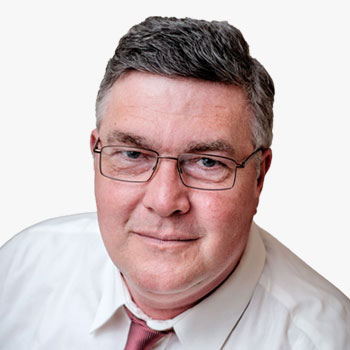

Dietrich HEINTZ is the CEO of cropix, which was founded in 2020. Cropix offers map products for agricultural applications from Sentinel-1 SAR data. His professional background is agriculture, forestry, GIS and remote sensing. He worked in two relevant institutes for more than 12 years, in field-trial management, environmental monitoring and data analysis. Since 2010 he works with SAR data for precision farming and crop insurance. He developed two indices which are a vegetation index (ESVI) and a humidity index (SWI), which are alibrated against different sources of reference data. The ESVI was regionally calibrated against Leaf Area Index (LAI) and yield.
Dietrich Heintz
 Dietrich Heintz
Founder & CEO , cropix , Switzerland
Dietrich Heintz
Founder & CEO , cropix , Switzerland
Dietrich HEINTZ is the CEO of cropix, which was founded in 2020. Cropix offers map products for agricultural applications from Sentinel-1 SAR data. His professional background is agriculture, forestry, GIS and remote sensing. He worked in two relevant institutes for more than 12 years, in field-trial management, environmental monitoring and data analysis. Since 2010 he works with SAR data for precision farming and crop insurance. He developed two indices which are a vegetation index (ESVI) and a humidity index (SWI), which are alibrated against different sources of reference data. The ESVI was regionally calibrated against Leaf Area Index (LAI) and yield.

Dietrich HEINTZ is the CEO of cropix, which was founded in 2020. Cropix offers map products for agricultural applications from Sentinel-1 SAR data. His professional background is agriculture, forestry, GIS and remote sensing. He worked in two relevant institutes for more than 12 years, in field-trial management, environmental monitoring and data analysis. Since 2010 he works with SAR data for precision farming and crop insurance. He developed two indices which are a vegetation index (ESVI) and a humidity index (SWI), which are alibrated against different sources of reference data. The ESVI was regionally calibrated against Leaf Area Index (LAI) and yield.
Founder & CEO | cropix | Switzerland
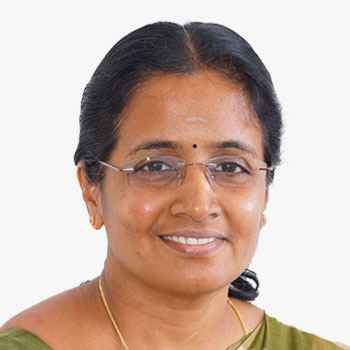

Parthasarathy Subashini received a B.Sc. (Mathematics) degree from Bharathiar University, TamilNadu, India in 1990 and M.CA degree from the same in 1993. She has also received qualified degree of M.Phil. and Ph.D. respectively in Computer Science in year 1998 and 2009 from Avinashilingam University for Women, Tamil Nadu, India. She has also obtained M.Sc. (Applied Psychology) from Bharathiar University, Coimbatore during 2022. From 1994, She is working as a Professor in the Computer Science Department of Avinashilingam University. Professor Subashini's research has spanned a large number of disciplines like Image analysis, Pattern recognition, Neural networks, and Computational Intelligence. Concurrently, she contributed to several fields of mathematics, especially Nature inspired computing. She has authored or co-authored 8 Books, 7 Book chapters, 1 Monograph, 165 papers, including IEEE, Springer's in various international, national journals and conferences. In course of her research and teaching, Professor Subashini has mentored over a hundred of post graduate students and guiding several doctoral students. She has held positions as reviewer, chairpersons for different peer reviewed journals. Under her supervision, she has ten research projects of worth more than 5 crores from various funding agencies like Defence Research and Development Organization, Department of Science and Technology, SERB and University Grants Commission. She has visited many countries like Singapore, Malaysia, Dubai, France, Switzerland, Italy, Canada, Germany, Spain, Czech Republic, Rome, Morocco, United States of America and China for various knowledge sharing events. As a member of IEEE, IEEE Computational Intelligence Society and IEEE Computer Society of India, she extended her contribution as IEEE Chair for Women in Computing under IEEE Computer Society of India Council in the year 2015-2016. She has established active international teams with University of Wyoming, USA and University HASSAN II Casablanca, Morocco by executing MoU with these 2 Universities. She is the Co-ordinator for 'Centre for Machine Learning and Intelligence' funded by Department of Science and Technology, Govt. of India. She is also an active Research Consultant for few Institutions. To add up her credit, recently she has contributed a Nature Inspired Optimization algorithm called 'Synergistic Fibroblast Optimization(SFO)'. The codes and published articles are publicly available for the perusal of the Research community in MATLAB central, Researchgate and Adademia.edu. She has also 3 patents at her credit.
Abstract
DEMARCATION OF OCEAN WAKES FROM SAR IMAGERY OF ROUGH SEA CONDITION
Investigations on the oceanic wakes are quite useful for meteorological forecasting and the prediction of disastrous oceanic storms. Therefore, oceanic wake detection and its parameter estimation becomes a high research hotspot. Synthetic Aperture Radar (SAR) is a type of sensor used for observation and characterization of earth's surface. SAR sensor has several advantages such as the ability to produce high spatial resolution images, capable to observe in the day and night and all-weather condition. The identification of ship wakes in the SAR images is considered as a most important application for the environmental monitoring and surveillance. In order to overcome the limitations in other surveillance systems, such as, coastal zone monitoring, agricultural monitoring, climate monitoring, tropical forest monitoring and so on, SAR is used because of its possibility to provide ship wake detection at high resolution over wide bands in rough sea conditions. Ship wakes SAR images captured by airborne radar system are generally exhibit long streaks. The presence of ship-wake (long streaks) projects the linear signatures in high-resolution SAR images. Sea surface is rough when the weather condition at sea is rough due to strong wind, waves, swell and storms. Under the rough sea condition, the propagation of radar energy and the subsequent radar coverage is strongly influenced by various atmospheric effects, such as, strong wind, wave height, weather condition, oceanic currents and rainstorms. The identification of ship wakes in Synthetic Aperture Radar (SAR) image under the rough sea condition is viewed as a highly complex task for the real time monitoring and surveillance applications. It becomes a quite big challenge due to coherent radiation of backscattering signals and the multiplicative speckle noise found in SAR images. The presentation will focus on how ocean wakes can be identified from SAR imagery taken on rough sea conditions.
Parthasarathy Subashini
 Parthasarathy Subashini
Professor of Computer Science , Avinashilingam University for Women , India
Parthasarathy Subashini
Professor of Computer Science , Avinashilingam University for Women , India
Parthasarathy Subashini received a B.Sc. (Mathematics) degree from Bharathiar University, TamilNadu, India in 1990 and M.CA degree from the same in 1993. She has also received qualified degree of M.Phil. and Ph.D. respectively in Computer Science in year 1998 and 2009 from Avinashilingam University for Women, Tamil Nadu, India. She has also obtained M.Sc. (Applied Psychology) from Bharathiar University, Coimbatore during 2022. From 1994, She is working as a Professor in the Computer Science Department of Avinashilingam University. Professor Subashini's research has spanned a large number of disciplines like Image analysis, Pattern recognition, Neural networks, and Computational Intelligence. Concurrently, she contributed to several fields of mathematics, especially Nature inspired computing. She has authored or co-authored 8 Books, 7 Book chapters, 1 Monograph, 165 papers, including IEEE, Springer's in various international, national journals and conferences. In course of her research and teaching, Professor Subashini has mentored over a hundred of post graduate students and guiding several doctoral students. She has held positions as reviewer, chairpersons for different peer reviewed journals. Under her supervision, she has ten research projects of worth more than 5 crores from various funding agencies like Defence Research and Development Organization, Department of Science and Technology, SERB and University Grants Commission. She has visited many countries like Singapore, Malaysia, Dubai, France, Switzerland, Italy, Canada, Germany, Spain, Czech Republic, Rome, Morocco, United States of America and China for various knowledge sharing events. As a member of IEEE, IEEE Computational Intelligence Society and IEEE Computer Society of India, she extended her contribution as IEEE Chair for Women in Computing under IEEE Computer Society of India Council in the year 2015-2016. She has established active international teams with University of Wyoming, USA and University HASSAN II Casablanca, Morocco by executing MoU with these 2 Universities. She is the Co-ordinator for 'Centre for Machine Learning and Intelligence' funded by Department of Science and Technology, Govt. of India. She is also an active Research Consultant for few Institutions. To add up her credit, recently she has contributed a Nature Inspired Optimization algorithm called 'Synergistic Fibroblast Optimization(SFO)'. The codes and published articles are publicly available for the perusal of the Research community in MATLAB central, Researchgate and Adademia.edu. She has also 3 patents at her credit.
Abstract
DEMARCATION OF OCEAN WAKES FROM SAR IMAGERY OF ROUGH SEA CONDITION
Investigations on the oceanic wakes are quite useful for meteorological forecasting and the prediction of disastrous oceanic storms. Therefore, oceanic wake detection and its parameter estimation becomes a high research hotspot. Synthetic Aperture Radar (SAR) is a type of sensor used for observation and characterization of earth's surface. SAR sensor has several advantages such as the ability to produce high spatial resolution images, capable to observe in the day and night and all-weather condition. The identification of ship wakes in the SAR images is considered as a most important application for the environmental monitoring and surveillance. In order to overcome the limitations in other surveillance systems, such as, coastal zone monitoring, agricultural monitoring, climate monitoring, tropical forest monitoring and so on, SAR is used because of its possibility to provide ship wake detection at high resolution over wide bands in rough sea conditions. Ship wakes SAR images captured by airborne radar system are generally exhibit long streaks. The presence of ship-wake (long streaks) projects the linear signatures in high-resolution SAR images. Sea surface is rough when the weather condition at sea is rough due to strong wind, waves, swell and storms. Under the rough sea condition, the propagation of radar energy and the subsequent radar coverage is strongly influenced by various atmospheric effects, such as, strong wind, wave height, weather condition, oceanic currents and rainstorms. The identification of ship wakes in Synthetic Aperture Radar (SAR) image under the rough sea condition is viewed as a highly complex task for the real time monitoring and surveillance applications. It becomes a quite big challenge due to coherent radiation of backscattering signals and the multiplicative speckle noise found in SAR images. The presentation will focus on how ocean wakes can be identified from SAR imagery taken on rough sea conditions.

Parthasarathy Subashini received a B.Sc. (Mathematics) degree from Bharathiar University, TamilNadu, India in 1990 and M.CA degree from the same in 1993. She has also received qualified degree of M.Phil. and Ph.D. respectively in Computer Science in year 1998 and 2009 from Avinashilingam University for Women, Tamil Nadu, India. She has also obtained M.Sc. (Applied Psychology) from Bharathiar University, Coimbatore during 2022. From 1994, She is working as a Professor in the Computer Science Department of Avinashilingam University. Professor Subashini's research has spanned a large number of disciplines like Image analysis, Pattern recognition, Neural networks, and Computational Intelligence. Concurrently, she contributed to several fields of mathematics, especially Nature inspired computing. She has authored or co-authored 8 Books, 7 Book chapters, 1 Monograph, 165 papers, including IEEE, Springer's in various international, national journals and conferences. In course of her research and teaching, Professor Subashini has mentored over a hundred of post graduate students and guiding several doctoral students. She has held positions as reviewer, chairpersons for different peer reviewed journals. Under her supervision, she has ten research projects of worth more than 5 crores from various funding agencies like Defence Research and Development Organization, Department of Science and Technology, SERB and University Grants Commission. She has visited many countries like Singapore, Malaysia, Dubai, France, Switzerland, Italy, Canada, Germany, Spain, Czech Republic, Rome, Morocco, United States of America and China for various knowledge sharing events. As a member of IEEE, IEEE Computational Intelligence Society and IEEE Computer Society of India, she extended her contribution as IEEE Chair for Women in Computing under IEEE Computer Society of India Council in the year 2015-2016. She has established active international teams with University of Wyoming, USA and University HASSAN II Casablanca, Morocco by executing MoU with these 2 Universities. She is the Co-ordinator for 'Centre for Machine Learning and Intelligence' funded by Department of Science and Technology, Govt. of India. She is also an active Research Consultant for few Institutions. To add up her credit, recently she has contributed a Nature Inspired Optimization algorithm called 'Synergistic Fibroblast Optimization(SFO)'. The codes and published articles are publicly available for the perusal of the Research community in MATLAB central, Researchgate and Adademia.edu. She has also 3 patents at her credit.
Abstract
DEMARCATION OF OCEAN WAKES FROM SAR IMAGERY OF ROUGH SEA CONDITION
Investigations on the oceanic wakes are quite useful for meteorological forecasting and the prediction of disastrous oceanic storms. Therefore, oceanic wake detection and its parameter estimation becomes a high research hotspot. Synthetic Aperture Radar (SAR) is a type of sensor used for observation and characterization of earth's surface. SAR sensor has several advantages such as the ability to produce high spatial resolution images, capable to observe in the day and night and all-weather condition. The identification of ship wakes in the SAR images is considered as a most important application for the environmental monitoring and surveillance. In order to overcome the limitations in other surveillance systems, such as, coastal zone monitoring, agricultural monitoring, climate monitoring, tropical forest monitoring and so on, SAR is used because of its possibility to provide ship wake detection at high resolution over wide bands in rough sea conditions. Ship wakes SAR images captured by airborne radar system are generally exhibit long streaks. The presence of ship-wake (long streaks) projects the linear signatures in high-resolution SAR images. Sea surface is rough when the weather condition at sea is rough due to strong wind, waves, swell and storms. Under the rough sea condition, the propagation of radar energy and the subsequent radar coverage is strongly influenced by various atmospheric effects, such as, strong wind, wave height, weather condition, oceanic currents and rainstorms. The identification of ship wakes in Synthetic Aperture Radar (SAR) image under the rough sea condition is viewed as a highly complex task for the real time monitoring and surveillance applications. It becomes a quite big challenge due to coherent radiation of backscattering signals and the multiplicative speckle noise found in SAR images. The presentation will focus on how ocean wakes can be identified from SAR imagery taken on rough sea conditions.
Professor of Computer Science | Avinashilingam University for Women | India
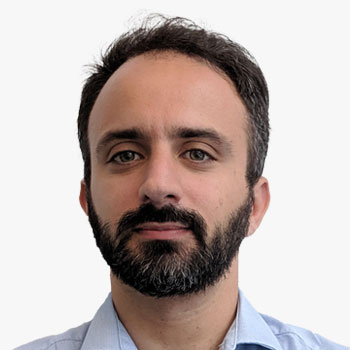

Matteo leads the lobbying and technical effort to protect the specific SAR bandwidth (10.0 - 10.4 GHz) used for VHR acquisitions (<25cm) from interests of 5G industry. He coordinates messages and actions to raise awareness about the socio-economic benefits of SAR to increase the international support towards Earth Observation and prevent 5G industry to gain access into the bandwidth, which would critically harm SAR endeavors for commercial and defense-related applications.
Abstract
SAR and 5G - Protecting Earth Observation applications from terrestrial networks
Matteo Emanuelli
 Matteo Emanuelli
Manager Future SAR Programs , Airbus Defence and Space , Germany
Matteo Emanuelli
Manager Future SAR Programs , Airbus Defence and Space , Germany
Matteo leads the lobbying and technical effort to protect the specific SAR bandwidth (10.0 - 10.4 GHz) used for VHR acquisitions (<25cm) from interests of 5G industry. He coordinates messages and actions to raise awareness about the socio-economic benefits of SAR to increase the international support towards Earth Observation and prevent 5G industry to gain access into the bandwidth, which would critically harm SAR endeavors for commercial and defense-related applications.
Abstract
SAR and 5G - Protecting Earth Observation applications from terrestrial networks

Matteo leads the lobbying and technical effort to protect the specific SAR bandwidth (10.0 - 10.4 GHz) used for VHR acquisitions (<25cm) from interests of 5G industry. He coordinates messages and actions to raise awareness about the socio-economic benefits of SAR to increase the international support towards Earth Observation and prevent 5G industry to gain access into the bandwidth, which would critically harm SAR endeavors for commercial and defense-related applications.
Abstract
SAR and 5G - Protecting Earth Observation applications from terrestrial networks
Manager Future SAR Programs | Airbus Defence and Space | Germany